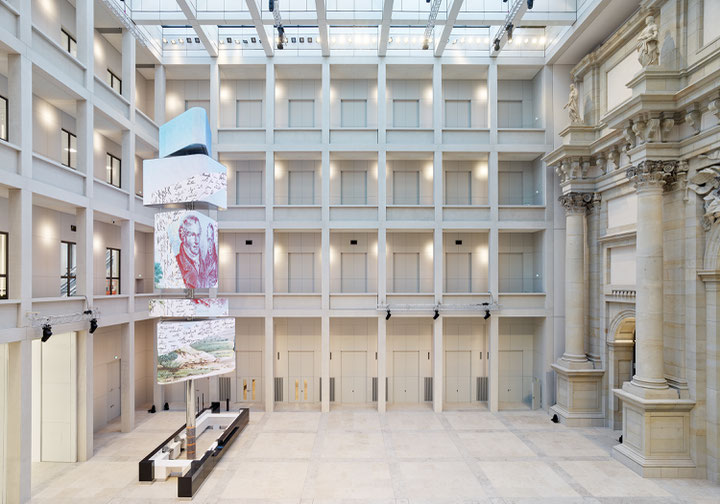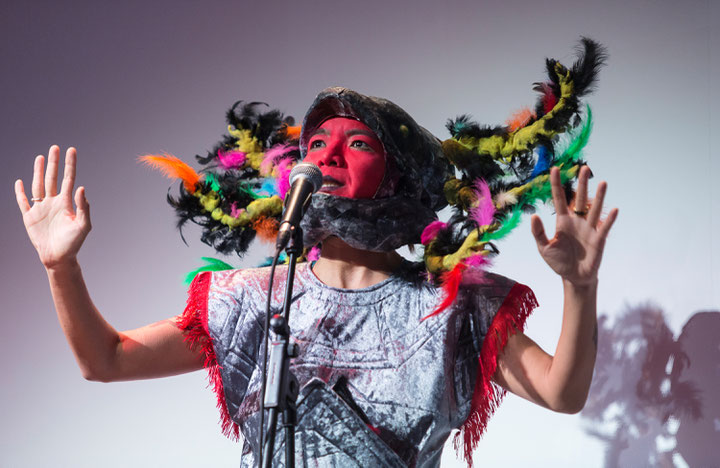Issue 2/2021 - Dinge, die uns trennen
The Organs of the Beast
Or: How Can the Metabolic Function of Today’s Institutions be Rethought?
Regardless of where one stands, contemporary art’s institutional metabolism appears to have slowed down, even stultified. Once-vital organs such as national museums, public collections, or large-scale art exhibitions no longer appear to evince significant signs of innovation or adaptation to new conditions. Everything everywhere somehow appears to be the same, and this is rendered more acute by the pandemic.
If we were to think of professionalized art practice as a body with different functions operating through the heart, brain, liver, or kidneys, then we might note that some organs actively support cognitive and sentient transformations, while others classify, extract, and expulse. So how do we go about reinvesting in those venues within which we work, in particular colonial museums and their collections? Can one edit—i.e., curate—the DNA of art across historical, regional, ethnic, and disciplinary taxonomies? What does it mean to experiment within today’s globalized institutional context? How sentimental have we become about our national heritage?
At a conference held in May 2017 entitled “The Museum as Battleground,” Hartwig Fischer, the German director of the British Museum, claimed: “The British Museum is a world. It’s about enticing visitors to be inspired to address contemporary issues. We have to make the British Museum work in terms of display.” In contrast, Manolo Borja-Villel of the Reina Sofia in Madrid, speaking at the same event, contended that: “Museums have ceased to be spaces of freedom. When things are about ideas that are not profitable, they become a problem. We need interruptions in the continuum. We need a change of institutionality and new spaces of antagonism, spaces of interpellation, anomalous structures, economically independent, outside of populist, neoliberal reason. How do we create a museum of the commons?”
The dominant focus in discussions on the future of encyclopedic museums centers on modalities of presentation. Display works towards defining who the visitor should be, from what country, economic strata, and class, as well as how much time they can spend in the museum, how they can behave in the space, and how they should respond to what they see. The universal museum becomes a stakeholder in the politics of nationalist reinstatement. To edit the DNA of art is to think through the possibility that certain institutions need to transition in line with the world’s changing status.1 But if Paul B. Preciado’s transitioning trope, which suggests a fundamental structural alteration to an existing condition, includes, in Sven Lütticken’s terms, “disruptive innovation,”2 then what is the nature of such a metamorphosis? Are new alliances being formed in art, and if so, how effective are they and how long do they last? Do they continue to bear the nationalist, corporate, or even militaristic undertones of their colonial forefathers? Can one define and activate an alliance simply through a bond of engagement based on friendship and mutual curiosity? Does this include the empathy that you should feel for your neighbor? How close is your collaborator, geographically speaking?
Which networks are trustworthy? Does your alliance resemble a chainmail of virtual, simulated links? Moreover, can friendship as alliance generate autonomy from existing mega-institutional networks—those museums or universities that are busy engaging in global brand copulation while reinstating nationalist cultural agendas?
In 2017, Germany was in the throes of three major institutional discontents symptomatic of a cultural metabolic breakdown: the debacle surrounding the Volksbühne, the fallout of documenta 14’s overspend, and the unwieldy erection of the Humboldt Forum that continues to perplex both academics and activists. Representing a peoples’ theatre, an avant-garde art event, and a state museum, each one mirrors a dysfunction motored in large part by sclerotic bureaucracy and tenacious identity politics. At the Humboldt Forum in Berlin, Germany seeks to reinstate cultural magnanimity by displaying masterpieces of non-European origin yet German provenance and ownership. Effectively, this organ of the nation claims something along the lines of: “We in Germany brought this collection together, we in Germany know the most there is to know about these objects because of our excellent well-traveled ethnologists, and we in Germany shall preserve these collections better than anyone else. And, as it is, we have the leading experts with scientific knowledge; we shall select what we believe to be exhibited and which object we discern to be a masterpiece. Finally, in Germany as elsewhere in Europe, we shall restrict public access to these historical artifacts for conservation reasons but propose digitization as a legitimate alternative.” But who selects which artifacts should be photographed? And how can a photographic representation testify to the complexity and ingenuity of a human-made material object? It is therefore not just physical but also intellectual ownership of these “unauthored” objects in museological collections that has to be called into question, through alternative discourses that are neither structured on the logos of ethnicity nor the parameters of one single disciplinary episteme, be it art history or anthropology.
At a series of roundtables that I curated for the Goethe-Institut in 2018, which were held in Phnom Penh, Singapore, and Kuala Lumpur, we debated the role of artists with regard to collections and future museums. The engagement of artists in the remediation of contested archives and collections indicates the increasing legitimacy of subjective historiographies and meta-fictions. Whether this takes place in Southeast Asia, on the African continent, or in Germany, it demonstrates an attempt to define a new heuristic space able to draw in different faculties, methodologies, and shifting social contexts. It also embraces incompleteness and risk in the identification of artworks. It asks: Can we produce an art today that cannot be possessed, that cannot be defined through identity politics, indigeneity claims, ethnicity, nationalism, or colonial disciplines? Can one find new formulations for intellectual property rights on the basis that expropriated cultural production cannot be legally owned by one single nation or ethnic group? Could an intersection between the museum and the university help in the remediation of colonial collections and activate new forms of experimental visual inquiry? What thinning agents are needed to irrigate a flow between the museum and the university? What forms of human dexterity can deal best with today’s bureaucracy of research?
When asked what I think about the future of the world cultures or ethnographic museum, I reply that this necro-political organ no longer exists. It cannot continue to be a museum as it has been for the last 150 years. The public deployment of the beast has to change right down to its core. For the worst scenario would be for these newfangled exhibition displays to become instrumentalized for sinister, xenophobic intentions. This is why I contend that this particular cultural infrastructure, with its imperial and colonial legacies, needs to transition into what I call a “museum-university.” This backstage venue for students and researchers would encourage transdisciplinary inquiry at university level based directly on historical collections. By releasing objects from the hold of ethnography and public display, the contents of collections, those agent-artifacts, would circulate both physically and intellectually. As a result, the discourse of provenance would begin to transform, generating alternative evaluations that would help to dislodge colonial sovereignty. For one of the key crimes perpetrated by the colonial museum ethnographer is to have omitted the authorship of artifacts and, by implication, to have denied options for future ownership based on proprietary naming. Today, a legal argument urgently needs to be developed to enable rights of access to these vast ethnographic collections for researchers of all nations and schools of thought. Only rights of access can generate a “museum of the commons” (Borja-Villel) and, with it, an equitable reassessment of colonial collections in Europe. Reconsidering the metabolic functions of these venues would be a first step toward constructing architectonic spaces and educational conditions that take into account the contemporaneity of the world’s manifold art histories.
[1] See Paul B. Preciado and Georgia Sagri, “Exposed to the Unknown,” Mousse no. 58 (April–May 2017), 113.
[2] See “Sven Lütticken on the Volksbühne Occupation: Art as Immoral Institution,” October 3, 2017, Texte zur Kunst, footnote 10, online https://www.textezurkunst.de/articles/sven-lutticken-volksbuhne-occupation/
(accessed October 9, 2017).



